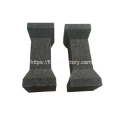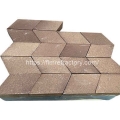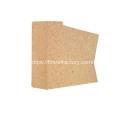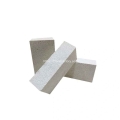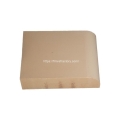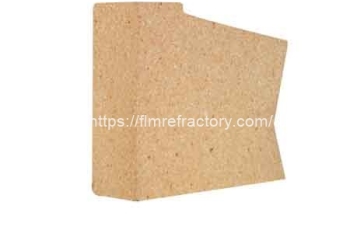- Performance. Innovation. Worldwide. Your trustworthy Refractories Manufacturing Partner--Fireramo
- +86 175 3769 7777
Corundum Mullite Brick
- Category: Mullite Brick
- |
- Author: Fireramo
Corundum mullite bricks are made from a mixture of corundum and mullite. Corundum mullite bricks offer high strength, excellent thermal shock resistance and good chemical stability.
- Origin: China
- Product Name: Fireramo Corundum Mullite Brick
- OEM/ODM: Support
- Refractoriness (℃): 1770< Refractoriness< 2000
- Apparent Porosity: ≤17%
- Bulk Density: ≥3.0g/cm3
- Fe2o3: ≤0.1%
- Al2O3: ≥75%
Search
Contact
High quality refractory bricks
Product Details
Corundum Mullite Brick for Sale
Corundum mullite bricks are refractory materials with high strength, excellent thermal shock resistance and good chemical stability. Corundum mullite refractory bricks are widely used in high-temperature applications such as furnaces, kilns and other industrial applications requiring resistance to high temperatures and thermal shock. It is made from a mixture of corundum (aluminum oxide, Al2O3) and mullite, both of which are high-purity, high-strength materials with excellent thermal stability.



Features of Fireramo’s corundum mullite bricks
High purity: CB series corundum mullite bricks have high Al2O3 content and low impurity content, which ensures that the products have excellent refractoriness and chemical erosion resistance.
Excellent physical properties: the bulk density of the bricks are ≥3.2g/cm³ (CB-99), ≥3.15g/cm³ (CB-95), and ≥3.0g/cm³ (CB-90) respectively, and the apparent porosity are all ≤18%, which makes the bricks compact and strong, effectively preventing the infiltration of the high-temperature gases and slag, and at the same time, lowering the rate of heat conduction and improving the heat insulation effect.
High strength and refractoriness: All models of corundum mullite bricks have cold compression strength ≥100MPa and refractoriness ≥1700℃ under 0.2Mpa load, showing excellent high-temperature mechanical properties and high-temperature resistance.
Fireramo’s corundum mullite bricks applications
Fireramo’s corundum mullite bricks are widely used in metallurgy, the chemical industry, glass, ceramics, electric power, and other industries for high-temperature kilns, furnaces, hot air ducts, and a variety of high-temperature vessel lining and critical parts, especially for the need to withstand extremely high temperatures, severe wear and tear, chemical attack, and other harsh working conditions.
Corundum mullite bricks Specifications
| Item | CB-99 | CB-95 | CB-90 |
|---|---|---|---|
| Al2O3(%) | ≥99 | ≥95 | ≥90 |
| SiO2(%) | ≤0.2 | ≤3.5 | ≤8 |
| Fe2O3(%) | ≤0.2 | ≤0.2 | ≤0.2 |
| Bulk Density(g/cm3) | ≥3.2 | ≥3.15 | ≥3.0 |
| Apparent Porosity(%) | ≤19 | ≤18 | ≤18 |
| Cold Crushing Strength(Mpa) | ≥100 | ≥100 | ≥100 |
| Refractoriness under Load(0.2Mpa) | ≥1700 | ≥1700 | ≥1700 |
Specializing in refractory materials for over 20 years, we provide professional refractory solutions for the global high temperature industry.
Related Posts:
Theme By Fireramo

